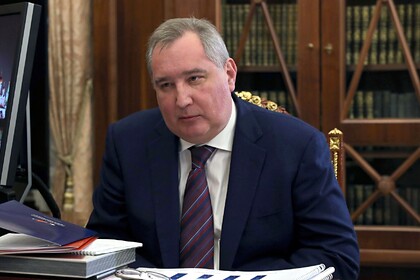The head of Roscosmos Dmitry Rogozin said that funds have also been allocated for new lunar vehicles
MOSCOW, February 25. /tass/. Funding for the Venus-D mission will begin this year, and funds have also been allocated for new lunar vehicles. This was announced today by the head of Roscosmos Dmitry Rogozin.
"This year we are starting to start financing the mission to Venus - "Venus-D". Funds were allocated for new lunar vehicles - the orbital Luna-26 and the heavy landing Luna-27. We are deploying work on the new Spektr-UV space observatory. Last year, with the support of the President of the Russian Federation, we defended funding for the development of scientific space," Rogozin said in an interview with Channel One.
The Venera-D mission consists of Russian landing and orbiting vehicles. Previously, it was planned that this project would be a joint one with the United States: at the end of 2013, a joint working group was created, but for some time its activities were suspended. In the fall of 2015, it resumed its work.
"Venus-D" is proposed to be launched with the help of a heavy launch vehicle "Angara-A5". The estimated launch date of the mission was called 2029. Earlier, the deputy director of the ICI RAS Oleg Korablev said that the cost of development work within the framework of the Venus-D project will be approximately 17 billion rubles. According to the President of the Russian Academy of Sciences Alexander Sergeev, the cost of the mission can reach $ 1 billion.
Roscosmos will begin this year the phased financing of the creation of a fully reusable rocket, Rogozin said. "We are considering the option of a unique medium-class rocket, which will be absolutely reusable. That is, not only the first stage will be used several times, but the entire structure of the carrier. This year we will launch a phased financing of the project," Rogozin said in an interview with Channel One.
Currently, Russia is developing a space rocket complex with the first returnable stage "Amur". The rocket will be launched from the Vostochny cosmodrome in the Amur region.
"Amur" will receive a take-off weight of about 360 tons, its height will reach 55 m, the diameter will be 4.1 m. The carrier will have a returnable first stage and a second one-time use, both will be equipped with methane engines.
With the return stage, Amur will be able to launch up to 10.5 tons of payload into low Earth orbit, in a one-time version -12.5 tons. The first launch of the new carrier immediately with the spacecraft is scheduled for 2026, the cost of the program will be 70 billion rubles.

